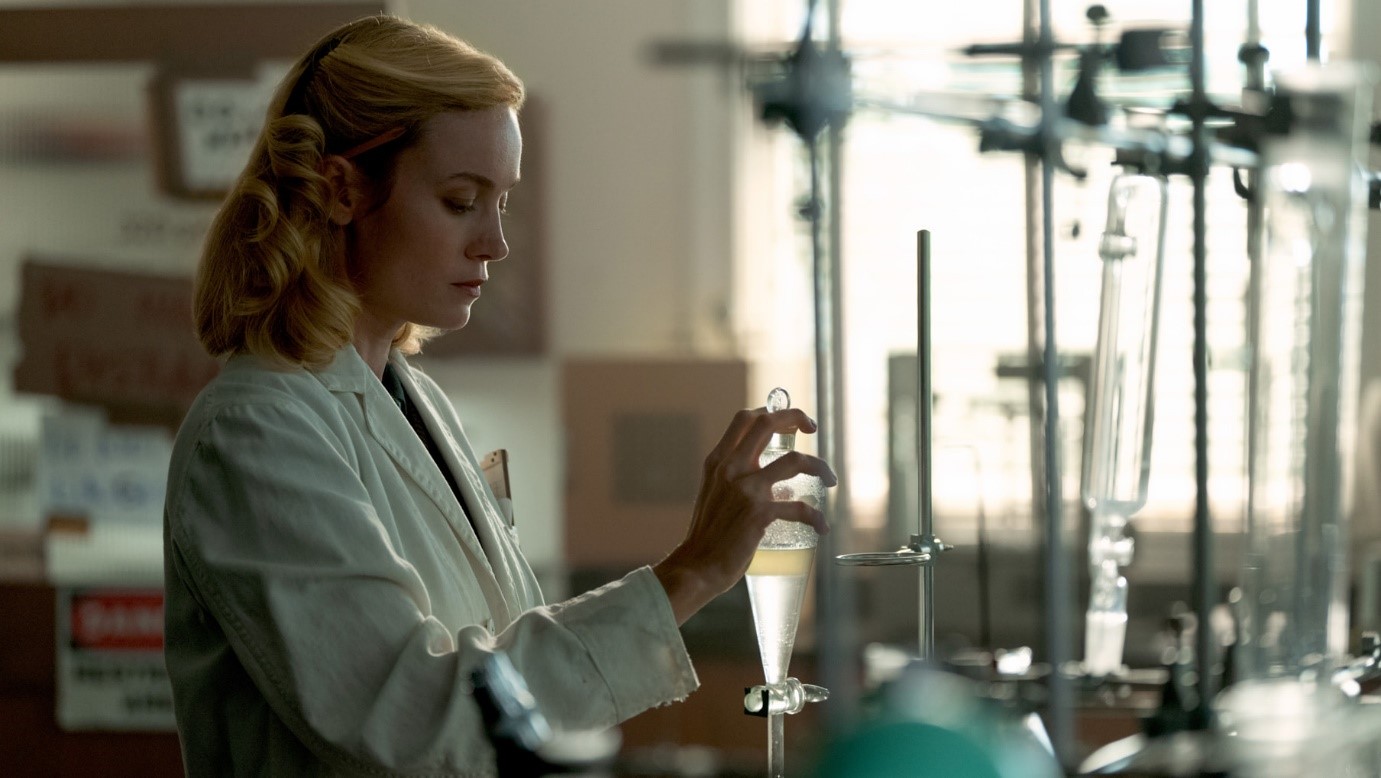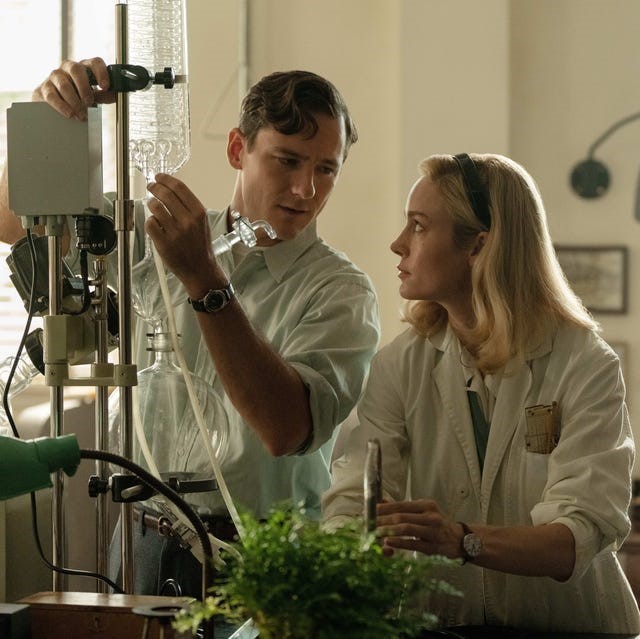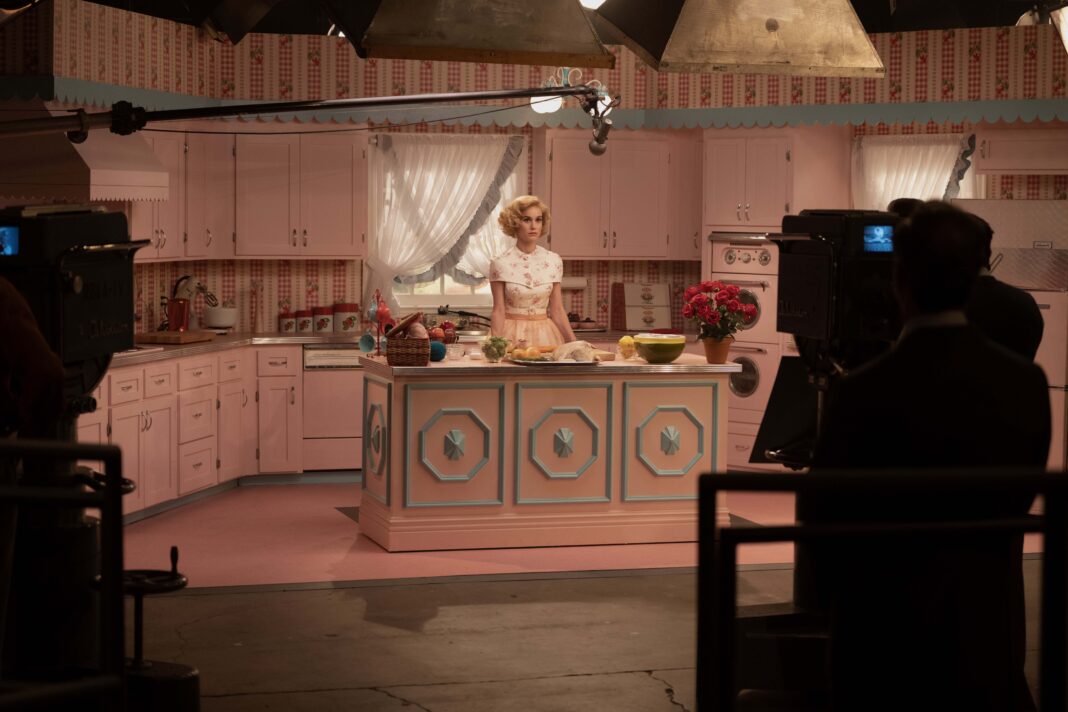Women belong in the kitchen Lab: Science, gender and Revolution in Lessons in Chemistry
Lessons in Chemistry, a show set in the mid-20th century and based on a famous novel by Bonnie Garmus [1], portrays the life of Elizabeth Zott, an excellent chemist with a hobby of cooking. It explores her journey as she is forced to navigate a world where her intellect is underestimated and her passion for science is constantly challenged by systemic biases.
Elizabeth Zott’s laboratory scenes emphasize the meticulous nature of experimental chemistry, demonstrating techniques such as titration, crystallization, and molecular analysis. From the first episode where she uses the distillation apparatus to make coffee for her colleagues to the scene where she builds a laboratory in her kitchen, the show has a smooth flow with scientific accuracy.
The scientific explanations in the show are easy to understand with the mere use of science jargon. The show was set in the 1950s and most of the scientific advancements of that era are common knowledge today.

The theme of the show is the application of chemistry in daily life. When Zott’s research was stolen, she started hosting a television cooking show and used her platform to teach scientific principles through cooking. This innovative approach serves as a way to communicate chemistry to the public and empowers women by linking scientific understanding to practical, everyday tasks.
For example, Elizabeth explained the chemical reactions involved in baking bread, the role of emulsifiers in sauces, crystallization, and the molecular changes that occur during fermentation. These explanations elevated cooking from a domestic chore to a scientific endeavor, challenging societal perceptions of women, and emphasizing that science permeates every aspect of life.
The show connects chemistry to the kitchen and illustrates the universality of scientific principles and the potential for science to be both accessible and empowering. It is a fun and accessible way of communicating science to a part of society that was discouraged from participating in science. Eventually, it encouraged women to pursue their goals as evidenced by a woman starting medical school in her late thirties after taking inspiration from Elizabeth.
The series also explores the intersection of gender and science, offering a critique of the patriarchal structures that dominated scientific institutions during the mid-20th century.
Elizabeth’s journey highlights the challenges faced by women in science, such as exclusion from research opportunities, lack of recognition for contributions, and the pervasive belief that women were inherently less capable in scientific endeavors. Unfortunately, such discrimination persists as we move up to higher positions or leadership positions in academia even in today’s time.
Her character defies these preconceptions by exhibiting resilience and intellectual prowess. Regarding the historical exclusion of women from science and the wider societal consequences of that exclusion, the play makes a significant remark. Lessons in Chemistry emphasizes the value of diversity in scientific research and the necessity of removing obstacles that impede fair participation by portraying Elizabeth as a chemist who defies gender norms.
In the mid-20th century, Lessons in Chemistry had a big cultural impact due to its scientific content mainly for women. Elizabeth Zott served as an example of how intelligence, willpower, and scientific interest transcend gender boundaries. It conveyed a strong message about persistence in scientific research with a lead female scientist who succeeded despite structural obstacles.
In the first episode she says, “Of course, I would be much further along in my research if I wasn’t making excellent coffee for mediocre scientists.”
Additionally, the series relates to current debates concerning equity in STEM fields. By drawing attention to the historical obstacles that women in science have encountered, it highlights the continued need for assistance and inclusivity for underrepresented groups in science. The story serves as a reminder that advancing science involves more than just making discoveries; it also entails fostering an atmosphere that allows for the growth of different viewpoints.

In Lessons in Chemistry, Calvin Evans, a gifted chemist, is Elizabeth Zott’s staunchest supporter and scientific equal. Calvin regarded her as an equal and acknowledged her academic expertise, providing both personal dedication and mentorship.
Calvin’s character highlighted the significance of collaboration and equal partnership in furthering scientific advancement and dismantling social obstacles. Calvin showcased this quality and published their research with Elizabeth as the first author even though the research institute committee opposed it and didn’t let them submit for the grant.
Lessons in Chemistry beautifully combines the emotional weight of personal challenges with the discipline of scientific inquiry to provide an interesting look into science, gender inequity, and resilience. The presentation is thought-provoking and inspirational because of its dedication to illustrating the difficulties of women in science and the intricacies of chemistry.
It does have certain shortcomings— some storylines feel extraneous or unnecessary at points, and the narrative occasionally drifts into over-dramatization, which drifts from the main themes of science and determination.
References:
- Egan, E., ‘Lessons in Chemistry,’by Bonnie Garmus. The New York Times Book Review, 2022: p. 14 (L)-14 (L).
- https://medium.com/@ahiko/30-powerful-lines-from-lessons-in-chemistry-dda79a15167a
- https://www.imdb.com/title/tt13911628/quotes/
- https://www.nytimes.com/2023/10/20/arts/television/lessons-in-chemistry.html
- https://www.harpersbazaar.com/uk/culture/culture-news/a44573576/lessons-in-chemistry-tv-series/
- https://dbknews.com/2023/10/17/lessons-in-chemistry-series-premiere/
Also, Read: The Radium Girls – A tale of oblivious poisoning

Khadija Tariq is a genetics graduate who loves understanding how diseases work at the molecular level and how we can use that knowledge to create better treatments. She was an intern at Scientia Pakistan Science Writing Internship Cohort Three.

